3 Surrealist Paintings by Dali To Capture Your Imagination
The wildest and weirdest imagination of Dali
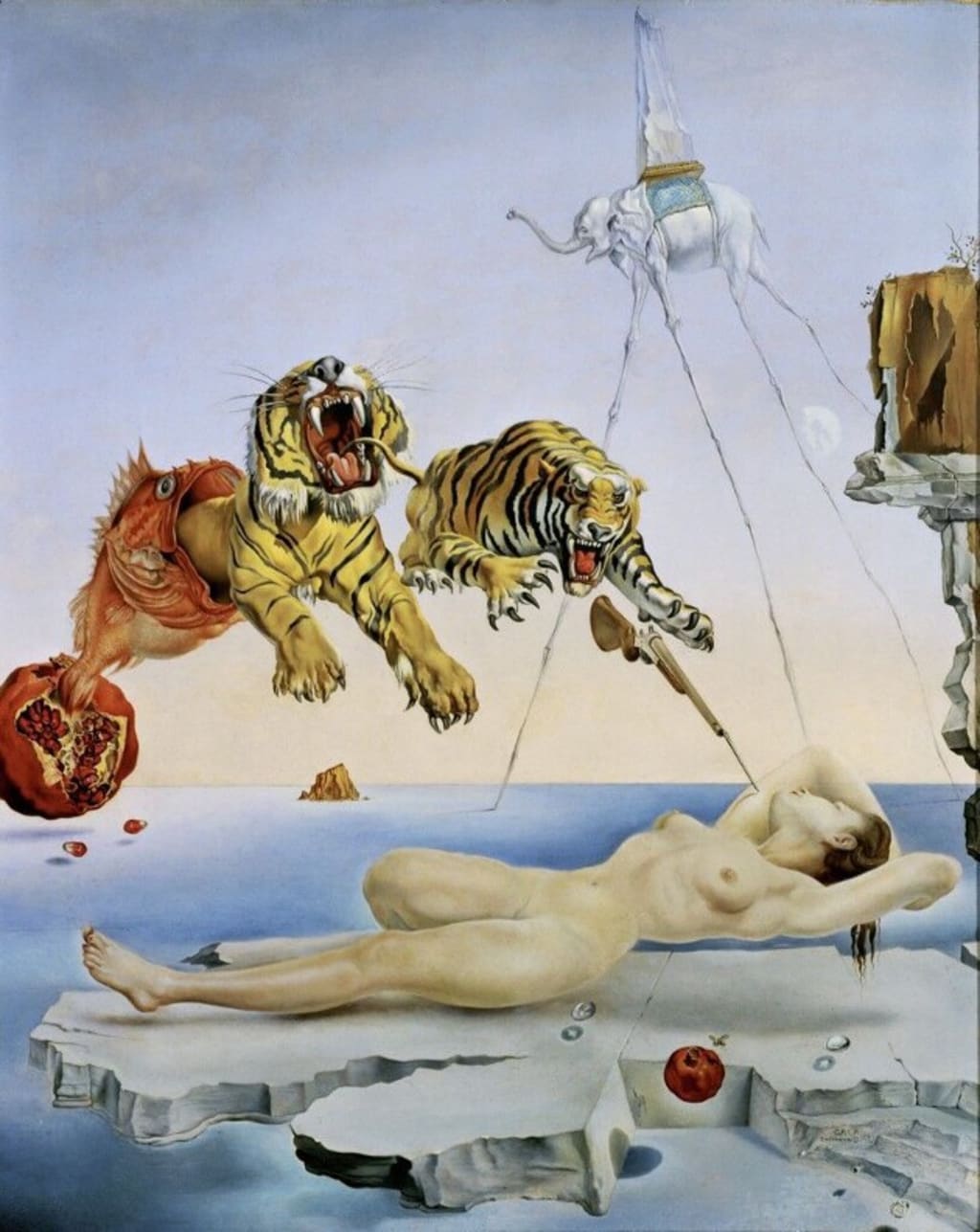
1. The Persistence of Memory (1931)
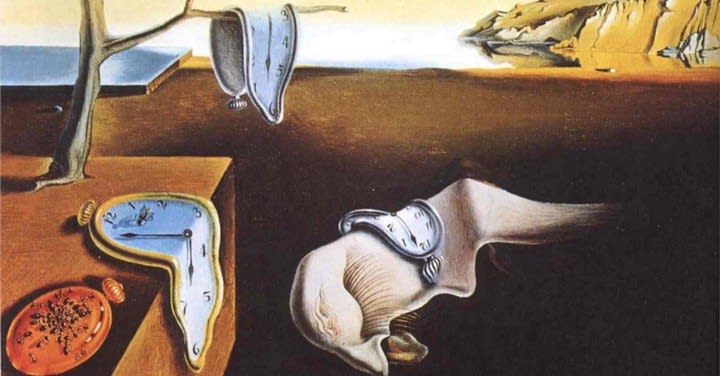
Dreams fascinated Dali.
He was the kind of painter who was always on the lookout for newer methods and techniques to put surrealism on paper.
In 1930, he developed a 'paranoic critical method' while painting The Persistence of Memory. This technique required no external drugs but self-induced psychotic hallucinations in order to produce art.
The result?
• This painting was set in a realistic Catalonian landscape where Dali lived and created a lot of his portraits.
• A set of melting or soft watches is scattered through the composition. The melting clocks may symbolize the passing of time as one experiences it in sleep or the persistence of time in the eyes of the dreamer.
When asked, "Was Einstein's theory of relativity an inspiration behind this piece?"
Dali scoffed and said, "no, Camembert cheese."
• One melting watch hangs over a dead olive tree, which symbolizes the political upheaval in his country Spain.
• The orange-colored pocket watch is filled with ants, which means death and decay - Dali's favorite theme.
• The figure in the center of the composition seems to me a dreaming woman with thick eyelashes. This figure exactly matches the rock formation in the left panel of Bosch's painting The Garden of Earthly Delights.
The difference between a madman and me, Dali said, "is that I am not mad."
---
2. Metamorphosis of Narcissus (1937)
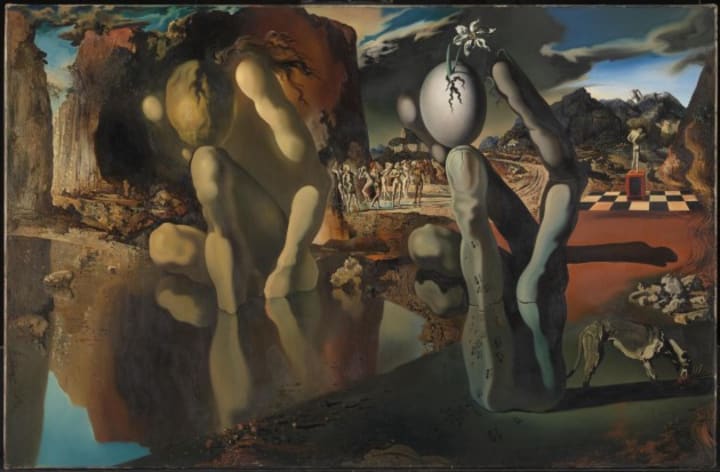
This painting is Dali's genius interpretation of the 2000-year-old Greek myth of Narcissus, recited by Ovid.
Here's the story - Narcissus was a beautiful youth who loved himself. No, it wasn't self-love. It was self-obsession and absorption up to a limit where he fell in love with himself.
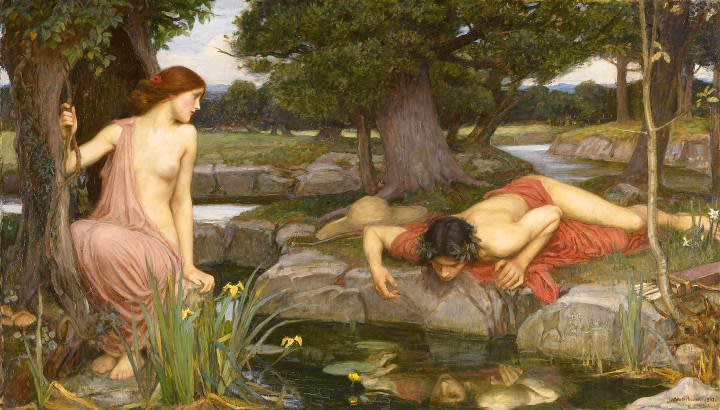
He dismissed the love proposals. When a beautiful nymph, Echo, fell madly in love with him, he spurned her. But Echo's love for Narcissus only grew.
Once while sitting near a lake, Narcissus was so consumed by his self-reflection that he tried to embrace himself.
Alas, he died of drowning!
Echo mourned over his body.
God immortalized Narcissus as the daffodil flower.
The story of Narcissus has elements of desire, rather same-sex desire, which intrigued Dali.
• The golden brown figure seems to bow down his head on his knee. The figure's reflection is seen in the water. There is a sense of heartache in this form. Is this Narcissus?
• The egg face portrayal of Narcissus is intentional. In fact, Dali's rendering of Narcissus is gender-neutral. The self-absorbed figure has this fiery golden glow, almost as if the figure is about to erupt.
• Just beside Narcissus is another figure, having the same stance as Narcissus but with a completely different meaning. The figure looks stony and barren. The ants are floating around the fingers depicting death and decay, a recurring theme in Dali's paintings.
When Dali sketched before getting this painting on canvas, he juxtaposed both figures.
Why these two figures, then?
Through this technique, Dali explored the multiple perceptions of the world.
The surrealist scholar Dawn Adès says, "It's like a systematic misreading of the world around you according to an overriding obsessional idea."
Just behind Narcissus, some of the same-sex people are dancing. Is it Dali's portrayal of homosexuality and desirability?
What's left is a corpse (bottom right) and a dog feasting on it.
The painting is an excellent study of death, discomposure, and loss.
A portrayal that even the most beautiful is lost and decomposed in the end. And out of it arises something more beautiful (a flower over the egg-shaped skull).
---
3. Dream Caused by the Flight of a Bee Around a Pomegranate a Second Before Awakening by Salvador Dalí (1944)
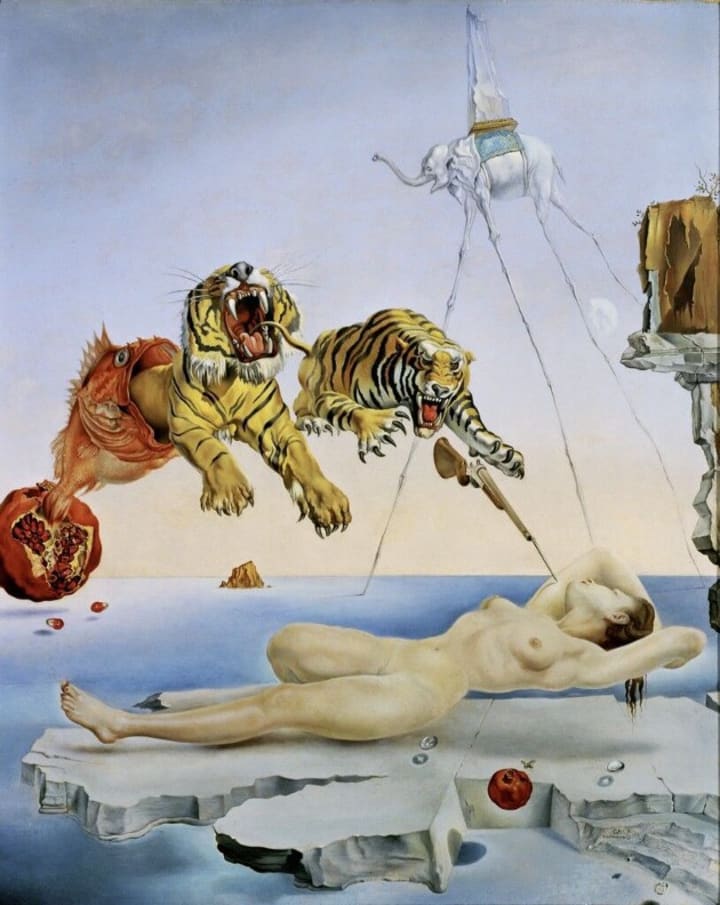
To me, this painting resembles a visual translation of Chuck Palahniuk's fantasy novel - Survivor.
• Dali's wife Gala sleeps naked on a flat rock that seems to be floating above the sea.
• The growling tigers symbolize phallic power. They try to pounce on Gala.
• One of the tigers comes out of a yelloweye rockfish that burst out of a pomegranate. Another one tries to attack Gala with a rifle and bayonet pricking her arm; awakening her from a peaceful dream.
• The pomegranate holds a special significance in Christianity and Judaism symbolizing sanctity, fertility, and abundance. The seeds are said to be number 613 - one for each of the Bible's 613 commandments.
• The smaller pomegranate floats between two drops of water. It casts a shadow of heart on the rock. Above it flies a bee, an insect that traditionally symbolizes the Virgin.
• The crystalized elephant resembles the Elephant and Obelisk by Lorenzo Bernini.
---
Which is your favorite Dali painting?
---
Here's the latest video on our YouTube channel.
About the Creator
Kamna Kirti
Art enthusiast. I engage with art at a deep level. I also share insights about entrepreneurship, founders & nascent technologies.
https://linktr.ee/kamnakirti
Enjoyed the story? Support the Creator.
Subscribe for free to receive all their stories in your feed. You could also pledge your support or give them a one-off tip, letting them know you appreciate their work.
Reader insights
Outstanding
Excellent work. Looking forward to reading more!
Top insights
Compelling and original writing
Creative use of language & vocab
Easy to read and follow
Well-structured & engaging content
Excellent storytelling
Original narrative & well developed characters
Expert insights and opinions
Arguments were carefully researched and presented
Eye opening
Niche topic & fresh perspectives
Heartfelt and relatable
The story invoked strong personal emotions
Masterful proofreading
Zero grammar & spelling mistakes
On-point and relevant
Writing reflected the title & theme






Comments (1)
Isn’t Dali amazing! Thanks so much for sharing this reflection on his work.